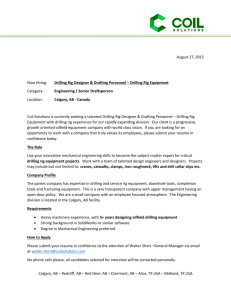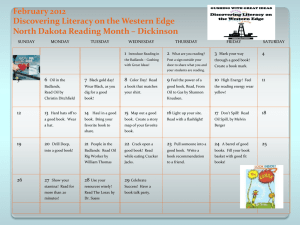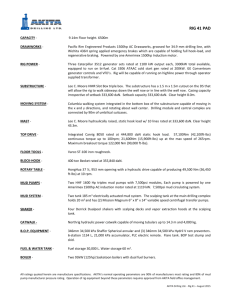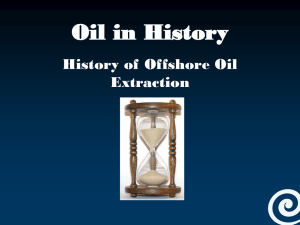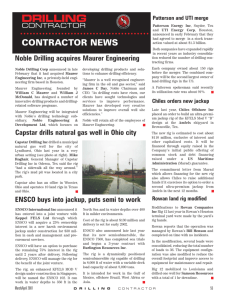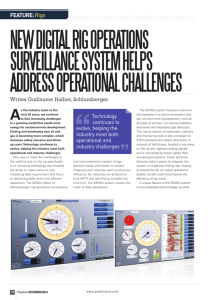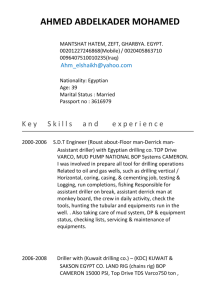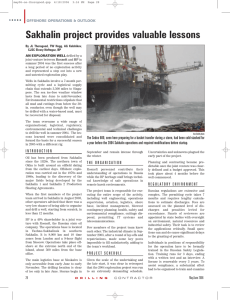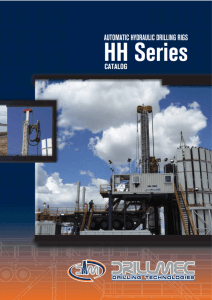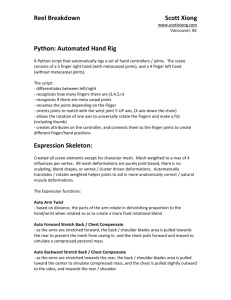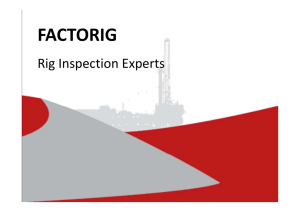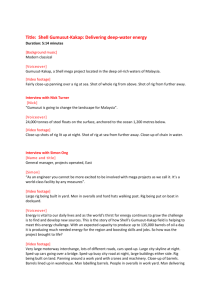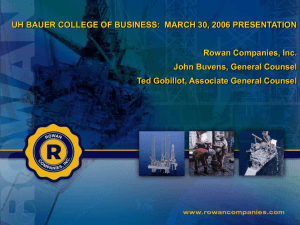Humphrey 44/16-C Exploration well
advertisement
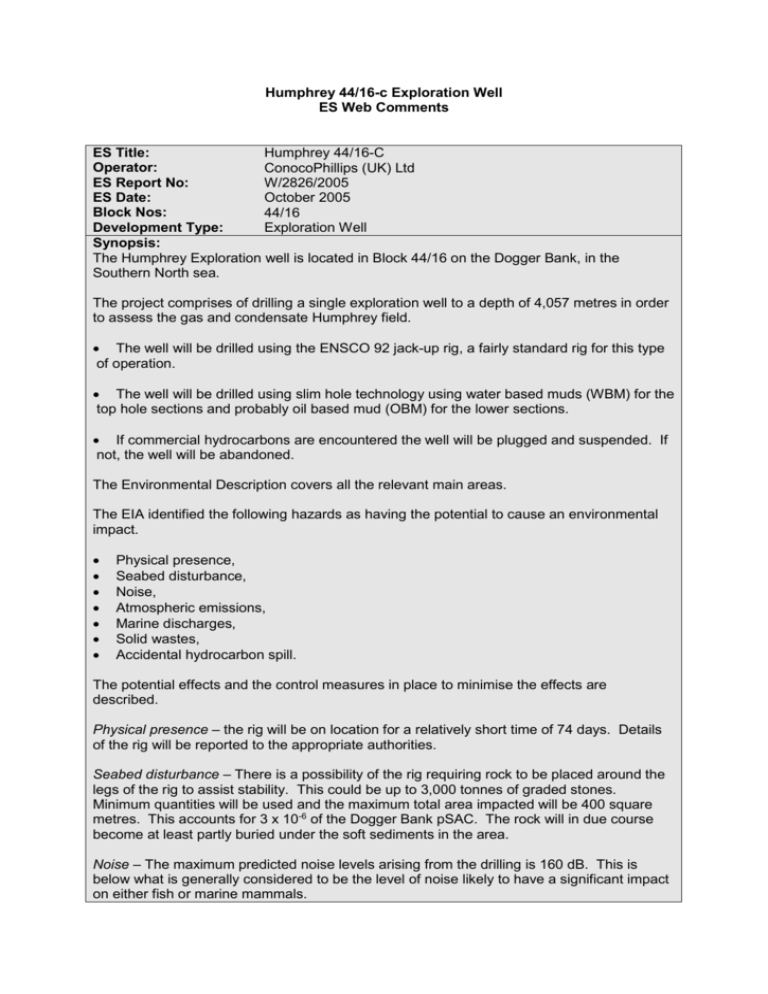
Humphrey 44/16-c Exploration Well ES Web Comments ES Title: Humphrey 44/16-C Operator: ConocoPhillips (UK) Ltd ES Report No: W/2826/2005 ES Date: October 2005 Block Nos: 44/16 Development Type: Exploration Well Synopsis: The Humphrey Exploration well is located in Block 44/16 on the Dogger Bank, in the Southern North sea. The project comprises of drilling a single exploration well to a depth of 4,057 metres in order to assess the gas and condensate Humphrey field. The well will be drilled using the ENSCO 92 jack-up rig, a fairly standard rig for this type of operation. The well will be drilled using slim hole technology using water based muds (WBM) for the top hole sections and probably oil based mud (OBM) for the lower sections. If commercial hydrocarbons are encountered the well will be plugged and suspended. If not, the well will be abandoned. The Environmental Description covers all the relevant main areas. The EIA identified the following hazards as having the potential to cause an environmental impact. Physical presence, Seabed disturbance, Noise, Atmospheric emissions, Marine discharges, Solid wastes, Accidental hydrocarbon spill. The potential effects and the control measures in place to minimise the effects are described. Physical presence – the rig will be on location for a relatively short time of 74 days. Details of the rig will be reported to the appropriate authorities. Seabed disturbance – There is a possibility of the rig requiring rock to be placed around the legs of the rig to assist stability. This could be up to 3,000 tonnes of graded stones. Minimum quantities will be used and the maximum total area impacted will be 400 square metres. This accounts for 3 x 10-6 of the Dogger Bank pSAC. The rock will in due course become at least partly buried under the soft sediments in the area. Noise – The maximum predicted noise levels arising from the drilling is 160 dB. This is below what is generally considered to be the level of noise likely to have a significant impact on either fish or marine mammals. Atmospheric emissions – There is no planned well test associated with this project. Consequently, atmospheric emissions are limited to those arising from fuel usage for power production both onboard the rig and from the supply vessels. These levels are relatively low. Marine discharges – Water based muds and cuttings arising from the drilling of the top hole will be discharged in to the marine environment. Drill cuttings modelling has been undertaken and the impacts are considered to be low, with some localised smothering of the benthic organisms present in the area. All Oil based muds and contaminated cuttings will be shipped to shore. There will be some chemical discharges and routine drainage water and sewage discharges. Solid waste disposal – All solid waste will be shipped to shore. Accidental hydrocarbon spill – The Humphrey well is a gas well and so there is no chance of a crude oil spill. The only other source of spill is from fuel. Oil spill modelling of 965 tonnes of diesel oil indicated that the likelihood of a spill reaching the shore is negligible. An OSCP will be in place for the drilling of this well. Transboundary and cumulative impacts have been addressed in detail within the ES and both have indicated that the proposed operations are unlikely to have a significant effect. Habitats – The proposed well is on the Dogger Bank, an area that has been put forward as pSAC under the Habitats Regulations. Consequently, it is very important that the potential impacts on the site are covered in detail within any submission. These have been addressed in detail for this exploration well and enough information has been provided in order for us to undertake an Appropriate Assessment. The conclusions from the ES and the AA indicate that that there is unlikely to be a significant impact on the structure, function and integrity of the pSAC. The ES has identified and satisfactorily addressed the main potential impacts arising from the development. Consultees: JNCC and Cefas responded with no concerns over the development of this project. Recommendation: On the basis of the information presented within the ES and advice from consultees it is recommended that the ES should be approved.

